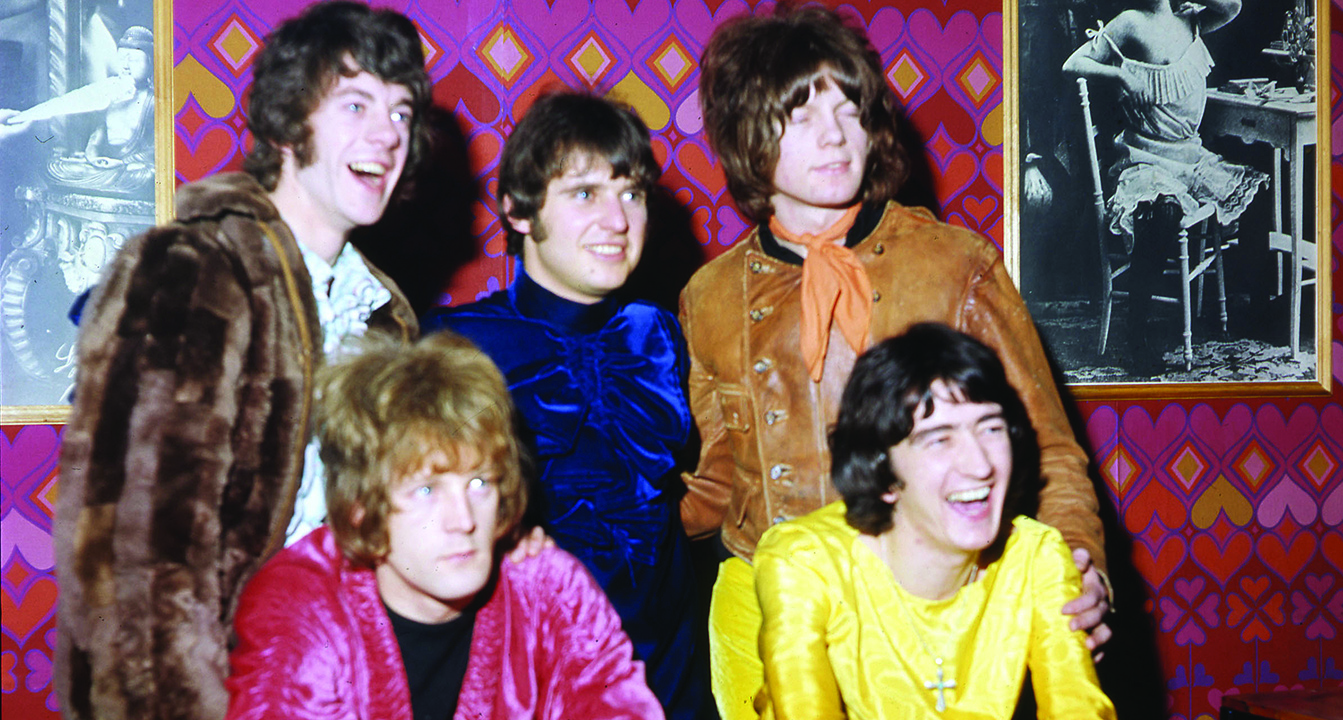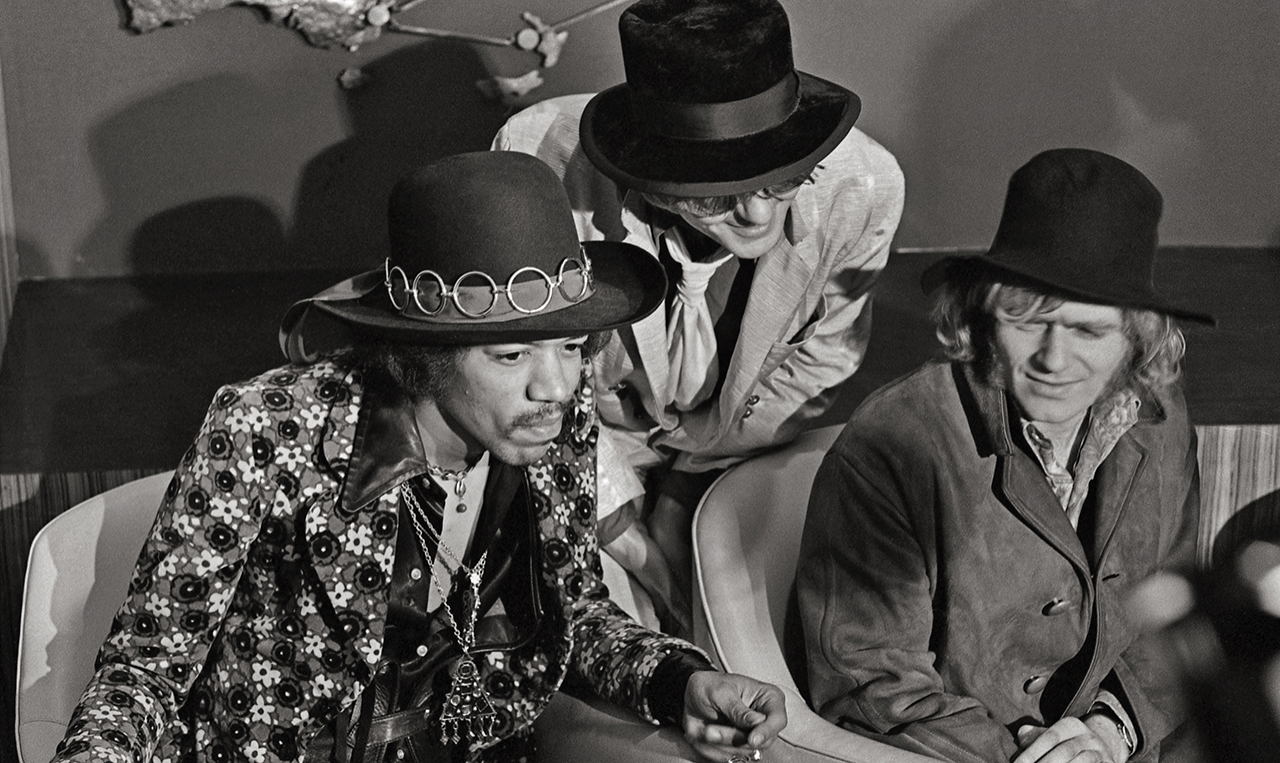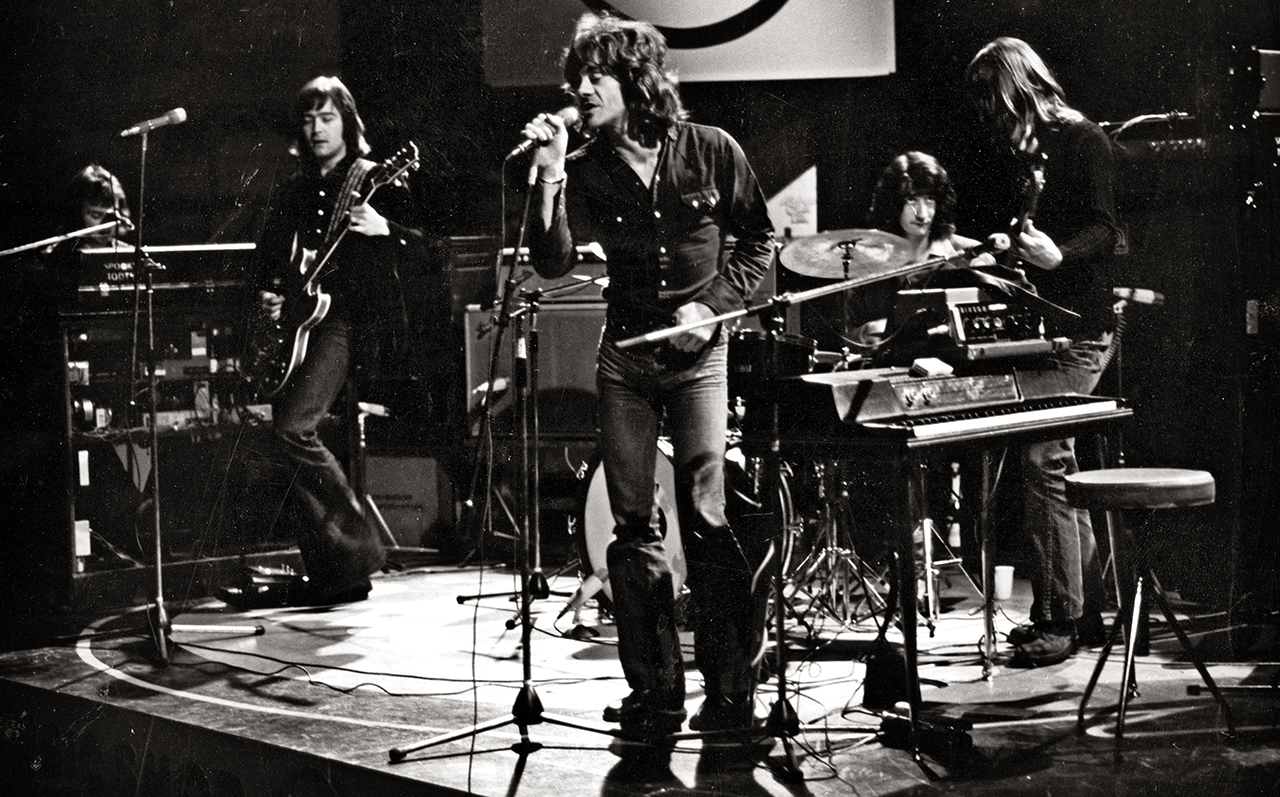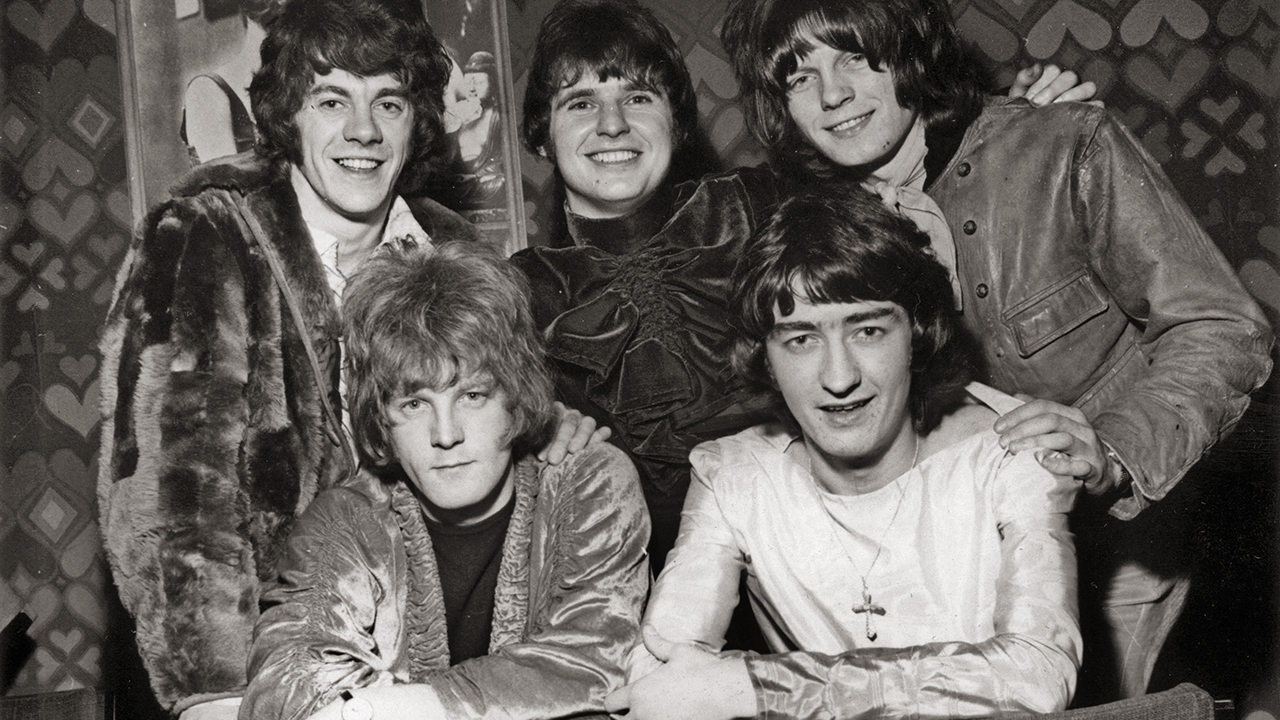Chris Blackwell had learned to trust his instincts. After all, they’d served him pretty well thus far. His Island Records label, initially a repository for Jamaican reggae, had grown from a micro-operation into Britain’s most happening indie label within eight years. Millie Small and the Spencer Davis Group’s pop hits brought the label its first flushes of success, but now, in late 1967, Island were looking to expand into folk, psychedelia and progressive rock.
Traffic, John Martyn and the original British Nirvana had already been snapped up, with Free, Nick Drake, Fairport Convention and Jethro Tull on the near horizon. But there was one band, originally signed as The V.I.P.’s and now called Art, that Blackwell didn’t quite know what to do with.
Art had just released the album Supernatural Fairy Tales, a psych-pop conflation of phasing effects and Summer Of Love vibes. They were a powerful quartet all right, led by gruff R&B singer Mike Harrison, yet there was something amiss. None of the members were natural songwriters, a fact borne out by Blackwell’s decision to have their cover of Buffalo Springfield’s For What It’s Worth as a lead-off 45. Both album and single stiffed. His solution was to bring in Gary Wright, an American singer-songwriter who he’d recently seen open for Traffic in Scandinavia.
“Chris introduced the idea,” recalls guitarist Luther Grosvenor. “And of course we all said: ‘Fuck him! We don’t want any Yanks in the band. This is an English set-up.’ But Chris said he really wanted us to look at this guy, because we were at the end of our situation with Art. Otherwise we would’ve been out of a job. Gary ended up coming over, we rehearsed and it worked.”

Renaming themselves Spooky Tooth, the five-piece quickly hit on their USP. Here was an Anglo-American band with two great singers, both of whom doubled up on piano and keyboards; a freewheeling guitar player; and an unusually expressive rhythm section in bassist Greg Ridley and drummer Mike Kellie. They were primed for a long career. Blackwell’s hunch, it seemed, was about to pay off.
Sure enough, Spooky Tooth made a wonderful noise, creating a rushing hybrid of hard white soul and bluesy prog, with rich inflections of gospel and psychedelia. The twin vocals of Harrison and Wright rang through the air like a hipper, more muscular version of the Righteous Brothers. At other times, with Wright singing falsetto against Harrison’s bullish lead and the band blazing behind them, they sounded as unbound as anything that West Coast acid-rock could offer.
Spooky Tooth also had genuine pedigree. In their previous incarnation as The V.I.P.’s they’d partied with Marlon Brando, given Keith Emerson a break and introduced an unknown Jimi Hendrix to the London stage. Now they had Island Records’ best producers in Guy Stevens and Jimmy Miller. They discovered Joe Cocker, held court at the Speakeasy, had Steve Winwood play on their records and were a hothouse for future members of Foreigner, Humble Pie, Mott The Hoople and The Only Ones.
Like many promising endeavours, though, it didn’t turn out like it should have. Spooky Tooth never took off commercially, least of all in the UK. Instead, while many of their Island labelmates – Free, Tull, Traffic, Fairport, King Crimson – went on to enjoy varying degrees of success, they were left to ponder what might have been. They were the heavyweights that somehow fell through the cracks.
“Spooky Tooth was the victim of a lot of circumstances that really weren’t healthy for the development of the band,” reckons Wright. “The recordings peaked when we did our second album, Spooky Two, but then we got kind of sidetracked.”
“I can’t tell you why we didn’t have hits,” adds Kellie. “But I think we were our own worst enemies, to be honest. We didn’t help ourselves. A corporate vision is essential when you have more than one person involved in a business venture. And we didn’t have that. Or a sensible attitude. Sometimes we needed a good slap.”
It all started brightly enough. In 1963 The V.I.P.’s, featuring Harrison and Ridley, had emerged from Carlisle as a driving R&B unit. After a couple of failed UK singles for RCA and CBS, the band were signed to Island by admirer Guy Stevens, who was also the label’s A&R man. Their first single, I Wanna Be Free, in 1966, made little impression at home but proved a big hit on the continent, especially in France. Kellie’s first V.I.P.’s gig, after being recommended to Blackwell by Steve Winwood (an ally from the Birmingham club circuit), was at a Parisian Gala Evening for UNICEF that November. Broadcast on TV and French radio and hosted by Hollywood A-listers Marlon Brando and Danny Kaye, the show was seen or heard by millions around the globe.
“We had a number one in France with I Wanna Be Free,” Harrison recalls, “but nobody had bothered to tell us. We did the gig, then got written invites from Marlon Brando and Danny Kaye to go to this after-show party in the Champs-Élysées. So we went down there in the Commer van, ran out of petrol halfway and ended up pushing it into the courtyard of this huge palace. We were wearing dirty old jeans and T-shirts and turned up looking as scruffy as anything. They had glasses with cigarettes in them on the table, so we started nicking them and putting them in our back pockets. We were just on a minimum wage back then.”
Around the same time, The V.I.P.’s were regulars at Hamburg’s Star Club, where they’d become the most popular attraction since The Beatles. They’d also taken on a couple of new members in Grosvenor and an unusually gifted, if slightly staid, young organist called Keith Emerson. “We were headlining at the Star Club one weekend,” Kellie recalls, “and Luther stuck a Black Bomber into Keith’s Coca-Cola. A Black Bomber was a sleeping pill that had the side effect of keeping you up for three days. I’ll never forget it. Halfway through the set, Keith went manic. Then there was no stopping him. Luther just thought: ‘You’re so bloomin’ boring, you’re an accountant. Take that, mate!’ Well, it gave Keith a career. I’m not saying we’re responsible for Keith Emerson’s success, but that’s when he started his act.”
Alas, The V.I.P.’s couldn’t replicate their European popularity in Britain and became better known by association than for anything else. In September 1966, for example, they were due to go on stage at London club Scotch Of St. James when Chas Chandler, who’d left The Animals for a career in artist management, breezed in. Harrison reveals: “Chas said: ‘Mike, I’ve got this lad who’s just come over from America. He’s called Jimi. Would you mind if he got up and jammed with you?’ He told me he’d literally just landed from America that day. So Jimi Hendrix got up with his guitar, plugged it through our amplifier and that was it. My God! He was playing stuff like Hey Joe and it was incredible. That was the first night Jimi Hendrix ever got up in England. Chas then started taking him round all the clubs, jamming with people like Clapton. Within two weeks the whole of England knew him.”

By 1967, Emerson had left to form The Nice, and the remaining foursome, on the advice of Guy Stevens, morphed into Art. The recording of Supernatural Fairy Tales also coincided with the band collaborating with another of Stevens’s charges, psychedelic poster designers Hapshash And The Coloured Coat who, for their deeply experimental debut, Featuring The Human Host And The Heavy Metal Kids, used Art as their avant-garde backing band.
Then along came Gary Wright, a former psychology student who’d been gigging around Europe with R&B combo The New York Tymes. The link to Island was Jimmy Miller, Wright’s old friend from New Jersey, who was fresh from producing Traffic’s Mr. Fantasy album for the label. Wright brought with him a surging psych-rock nugget in the shape of Sunshine Help Me. With Miller at the production helm, it was the first thing Spooky Tooth recorded in the studio.
Island were optimistic that Sunshine Help Me would be a hit. Its subsequent failure didn’t dampen their spirits too much, though, as they were convinced that Spooky Tooth would pay dividends sooner rather than later.
In the spring of 1968, Miller and the band went into the studio to record an album, later titled_ It’s All About_. “Gary was very actorly and a complete contrast to us, who were either from Carlisle or Birmingham,” Kellie remembers. “He used to get the mick taken out of him so much, but he’d written some songs and it was all very organic and natural. That’s what balanced the band – his creamy, New Jersey thing against the Carlislians, who at the time looked down on Americans as being second-class citizens. But it was done in a loving way. There was the rest of us, knocking the soft edges off this very talented and very useful fifth member.”
“It was a totally different experience for me,” Wright says, “but I thought it was really cool. The others kept looking at me with curiosity: ‘Who is this guy?’ I think they quite liked the fact that I was the only American in a group of Englishmen. Spooky Tooth was pretty unique in that way. But I was the one who wrote most of the music. We rehearsed every day and got our live act together really well.”
One of Spooky Tooth’s specialities, apart from the dual waves of sound from Wright’s Hammond organ and Harrison’s electric harpsichord, was their ability to rewire existing songs. Two of the album’s highlights were radical translations of Janis Ian’s_ Society’s Child_ and Bob Dylan’s Too Much Of Nothing. Taking a cue from Vanilla Fudge’s way with a cover, the band slowed things down and extemporised over the top, driven by the friction between Wright’s soul voice and the imperious tones of Harrison. The latter sounded like Ray Charles had he been raised in the blues clubs of Cumberland rather than in the Florida backwoods.
Spooky Tooth were soon being championed by influential Radio 1 DJ John Peel, and after the album was released in July ’68, they forged a reputation as a popular live draw in Europe. But apart from one of their number, the band were less than diligent about looking after what they had. “We weren’t the most responsible band,” explains Kellie. “Gary wrote songs, but he was also very much a businessman. I remember him filling in his BMI and ASCAP [music publishing] forms on the way to some gig at Kirklevington Country Club, in the back of our Vauxhall Cresta, and urging us to do the same. But we just rolled another joint. That was our biggest problem: we were a smoking band. We should’ve listened to Gary a lot more.”
In the meantime, another single, Love Really Changed Me, died on its arse too. With the UK market remaining resolutely uncracked, that August Spooky Tooth were sent off on their first US tour. Their opening was at San Francisco’s Fillmore West, straight off the plane, where they shared a bill with Buddy Guy and Quicksilver Messenger Service. America was to prove more receptive to the band than the UK over the next year, and Kellie still remembers the intoxication of that inaugural trip: “The smell of strawberry soap in the markets at Haight-Ashbury, pipe shops with leather hats and waistcoats and smoking paraphernalia. It was wonderful.”
Back home, they started work on a second LP. Jimmy Miller was kept on as producer, and there were cameos from Steve Winwood (I’ve Got Enough Heartaches) and Joe Cocker (Feelin’ Bad), whom the band had recommended to Blackwell after first meeting him on a Merseybeat tour a couple of years earlier.
Released in March ’69, Spooky Two was a hands-down masterpiece. Waitin’ For The Wind bucked and roared like a treacherous Procol Harum; Feelin’ Bad was raw gospel-blues at its most forceful; Better By You, Better Than Me (later covered by Judas Priest, where it became the subject of an infamous court case over its alleged role in the suicide attempts of two Nevada youngsters) brought a splurge of heaviosity; and perhaps most impressive of all, Larry Weiss’s Evil Woman was turned into a nine-minute epic of glorious riffs and subtle dynamics.
There was no upturn in the band’s fortunes, though, at least not in Britain. Spooky Two crept into the Top 50 in the US (where it was issued on the A&M label) and did decent, if unspectacular, business in Europe.
But Island’s next move, either out of desperation or some grand flight of fancy, effectively stopped the band in their tracks.
After Greg Ridley had departed for Humble Pie, where he joined Steve Marriott, Peter Frampton and Jerry Shirley, Chris Blackwell decided to hook them up with Pierre Henry, an electronic music composer signed to the Gallic arm of Philips, Island’s French distributors. Henry wanted to make an avant-garde album based on a Catholic Mass, with Spooky Tooth providing the backdrop. Still somewhat puzzled by the whole idea, the band agreed, on the proviso that it wouldn’t be released as an official Spooky Tooth LP.
“We had a meeting, then went into Morgan Studios and started recording,” says Kellie. “We were all spiritual animals in Spooky Tooth, whether Christian or, like Gary, a Buddhist. And on that basis we just sort of accepted what was going on. We did our tracks, then Pierre Henry came over one afternoon. He didn’t speak a word of English. He listened, seemed happy and went away. Then the tapes got sent to him and he finished them. And what came back is what you hear on Ceremony. It’s an astonishing mix, but it’s just crap.”
Ceremony was a jarring sound collage of rock, electronica and musique concrète, with little or no regard for harmony or melody. More alarming, however, was the fact that when it was released in December ’69, it was jointly credited to Henry and Spooky Tooth. The band were appalled. Unsurprisingly, it bombed.
“The problem was that everybody thought it was the third Spooky Tooth album, but it wasn’t,” says Harrison, the tone of his voice suggesting that he’s still haunted by the episode. “We were just paid a session fee for it. Blackwell came up to me afterwards and said: ‘That’s the biggest mistake I ever made.’ That’s actually what split the band up.”
Wright fell out with Blackwell as a direct result of Ceremony and quit the band. Snapped up by A&M Records, he set about a solo career, formed his own backing group, Wonderwheel, and began a long creative association with George Harrison, starting off with session work on the former Beatle’s album All Things Must Pass.
Grosvenor, Kellie and Mike Harrison pressed on as Spooky Tooth, bringing in personnel from Joe Cocker’s Grease Band to make 1970’s more conventional The Last Puff. Kellie and Grosvenor left soon after.
“Spooky Tooth were the best band I’d ever been in,” Grosvenor reflects. “In a way I served my apprenticeship with them. When Greg left, we started to lose impetus in what we were doing. Chris Blackwell kept me on and I recorded an album called Under Open Skies.”
Within three years, Grosvenor would be an integral part of Mott The Hoople under the flashy guise of platforms-wearing Ariel Bender.

The rest of the 70s was all fits and starts for Spooky Tooth. Wright rejoined, along with future Foreigner guitarist Mick Jones, for 1973’s remarkably good if dubiously titled You Broke My Heart So… I Busted Your Jaw. The album marks Spooky Tooth at their heaviest, with Wright’s gospel balladry offset by Harrison at his belligerent, grunting best on standout tracks such as This Time Around and Self-Seeking Man.
But Island had grown accustomed to ever-diminishing returns on the sales front. And with Roxy Music, Cat Stevens and Bob Marley & The Wailers among the artists now signed and bringing in the money for the label, Blackwell didn’t seem overly concerned. Spooky Tooth made two more albums: that year’s Witness (which reunited Harrison, Wright and Kellie) and 1974’s The Mirror.
After the final split, Kellie went on to join Peter Perrett in The Only Ones. Harrison wound up a fitful solo career and quit the business for what would be more than 20 years. Wright, meanwhile, became a major solo star in the US with the release of the hit singles Dream Weaver and Love Is Alive.
There was a messy attempt at a reunion when the original line-up (minus Wright) regrouped to make the album Cross Purpose, released in 1999. A year after Ridley passed away in 2003, Wright, Harrison and Kellie played a series of successful shows in Germany as Spooky Tooth. And although the name was resurrected for a brief tour in 2009, after coming together for Island’s 50th-anniversary celebrations, it’s unlikely that Spooky Tooth will ever happen again.
Looking back, Mike Kellie refuses to blame their lack of progress on the decision to release Ceremony. “We could’ve been a lot bigger, but with hindsight we were always playing catch-up because of the way it was set up. We were second to Traffic on the label, and the fact that Chris Blackwell owned the record company, managed the artists and ran the agency had to be too much for one man to take on. And somebody has to pay the price. There was nobody there to say: ‘Shut yourself up and play! I’ll sort the rest out.’ And I probably needed that more than most. But we were what we were, and I’m very proud to have been part of it. We were passionate. And Mike’s was one of the great voices, along with Winwood and Marriott.”
Harrison is at a loss to fully explain what happened. Or, rather, what didn’t. “We did very well in America and Europe,” he says. “We were never off the road, but record-wise we didn’t get in the charts. We didn’t release the right singles. Maybe we weren’t promoted enough, maybe we didn’t get enough airplay or even TV. It was mainly because Spooky Tooth was an album band. Would I do things differently if I had my time again? Probably, yes. But then again…”
Wright, who last year published his autobiography, Dream Weaver, is slightly more philosophical: “I look back fondly at Spooky Tooth. We played the way that band was supposed to play, and the times we shared together were great. It was a stepping stone in all our lives."

